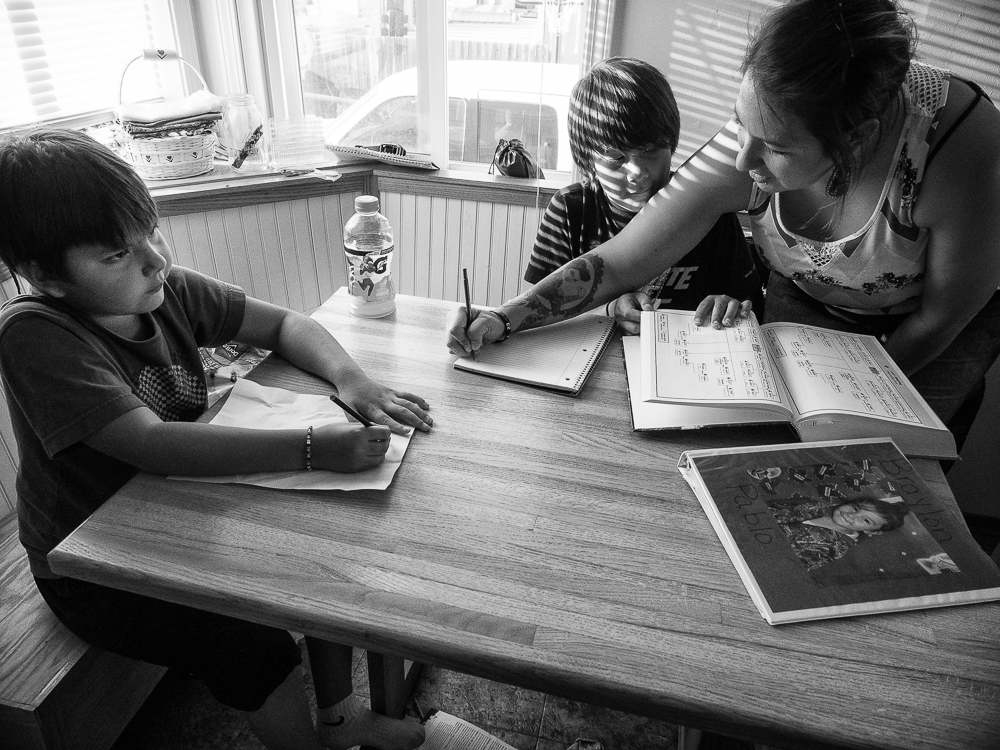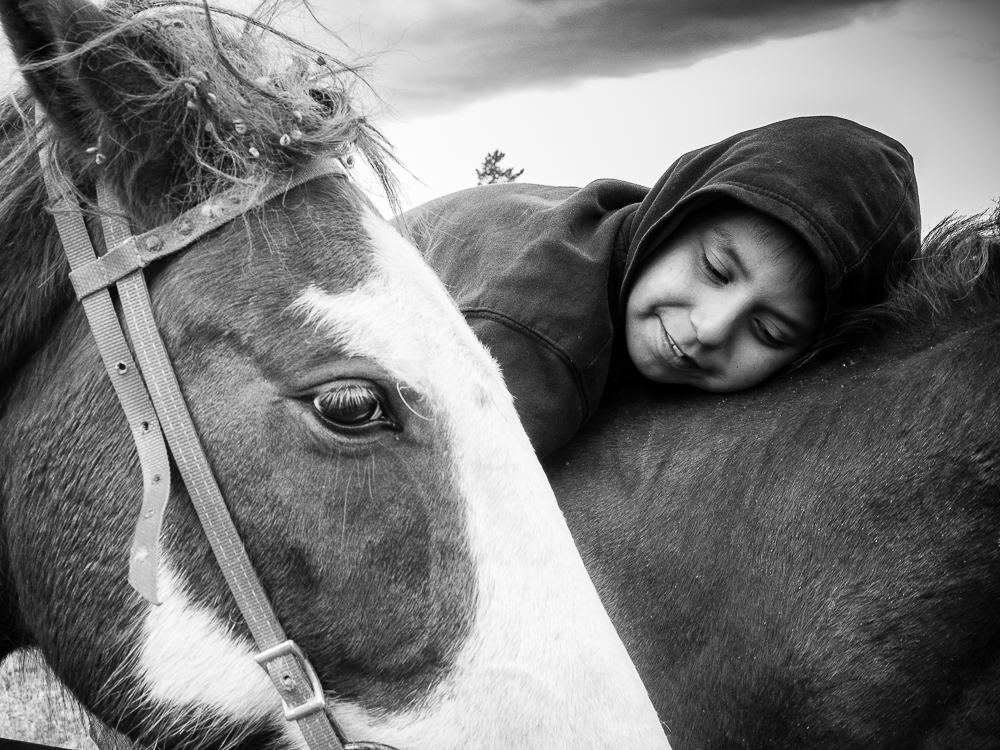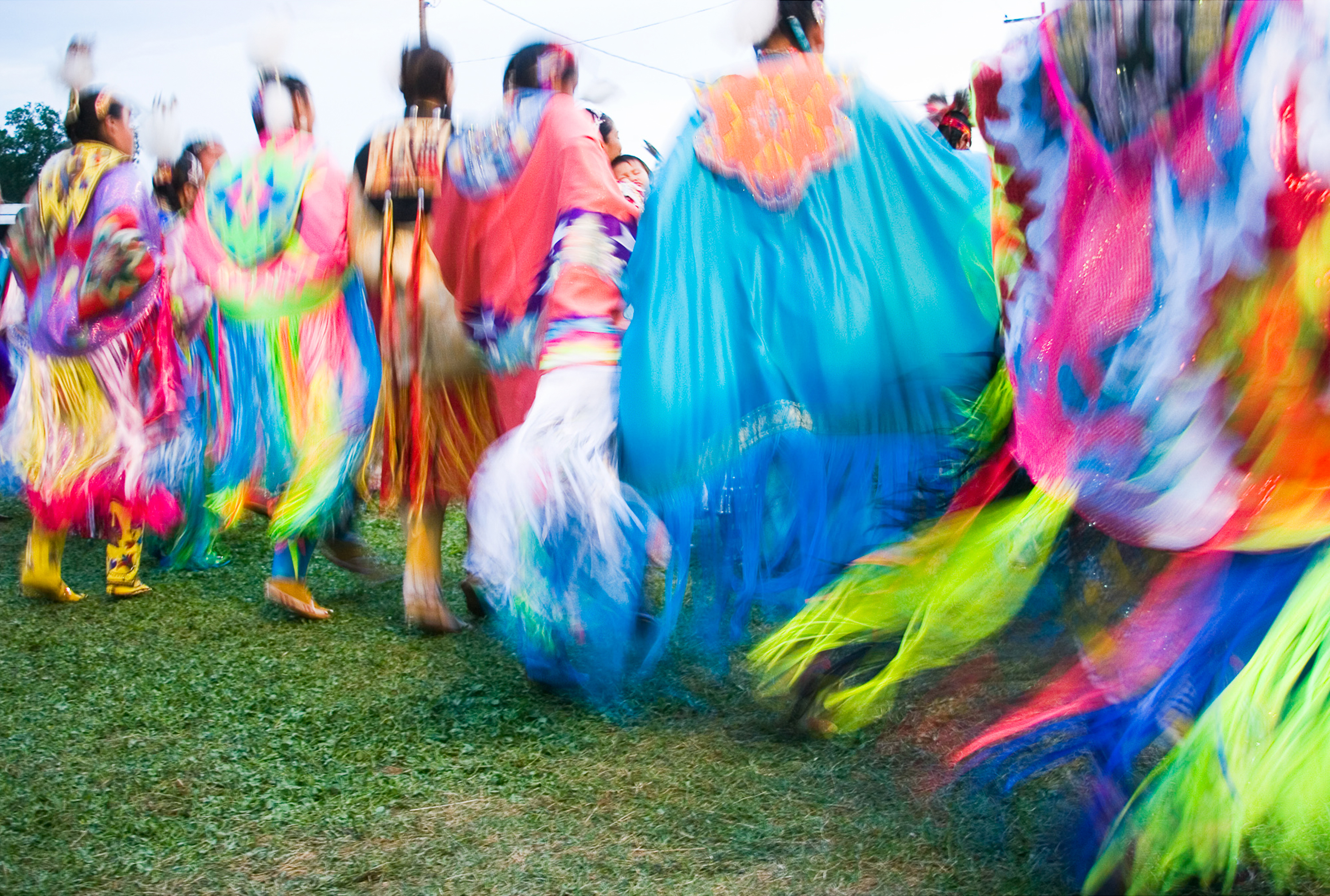External Sites, Readings and Videos

State-Specific Information
Montana's Indian Education for All requirement, embodied in "Essential Understandings Regarding Montana Indians" from the Montana Office of Public Instruction, is ground-breaking in ensuring that students learn what is correct and true to how this state's 12 tribes want to be represented. Its approach is useful for teachers everywhere in the United States.
"Tribal Territories in Montana," Map of Montana Indians' Ancestral Homelands and Reservations, Appendix A on page 31. Montana Office of Public Instruction.
"Montana Indians: Their History and Location."Montana Office of Public Instruction.
Montana Tribal Histories: Educators Resource Guide & Companion DVD from Montana Office of Public Instruction. Includes tribal timelines, treaties and other primary sources, and a companion DVD with interviews and oral histories.
South Dakota's Office of Indian Education updated Oceti Sakowin Essential Understandings and Standards gives school districts in South Dakota some basic knowledge about the Oceti Sakowin (the Lakota, Dakota and Nakota people).
The Wolakota Project is a collaborative effort of the South Dakota Department of Education and Technology & Innovation in Education. Using the Oceti Sakowin Essential Understandings which are guided directly by the elders, it provides opportunities for students, Native and non-Native, to develop understanding of themselves and their neighbors.
"Reservation Maps and Prairie Turnips," Map of South Dakota's Indian Reservations. Wolakota Project.
"Sioux Treaty Lands and Surrounding Area," Map of original South Dakota Indian Reservation.North Dakota Studies.
Mother Earth
He Sapa Woihanble: Black Hills Dream, edited by Craig Howe, Lydia Whirlwind Soldier and Lanniko L. Lee. Lakota, Dakota and Nakota writers share what the Black Hills – their spiritual center homeland -- mean to them personally and tribally. Includes four key documents related to Lakota claims to the Black Hills, including treaties, a Congressional Act and a Supreme Court decision.
Lakota Origin Story by Elder Duane Hollow Horn Bear, by Wo Lakota, who has traveled extensively around the country and abroad, lecturing and speaking on the history of the Oceti Sakowin people (People of the Seven Council Fires). He was born and raised on the Rosebud Indian Reservation in South Dakota and taught there at Sinte Gleska University for many years.
Land of the Spotted Eagle, by Luther Standing Bear. A first person look at Lakota life before and after the reservations, Standing Bear includes the importance of Native cultures and values and the status of Indian peoples in American society. When he returned to the Pine Ridge Sioux Reservation after sixteen years, his dismay at the condition of his people may have caused him to write this book, first published in 1933.
Lakota and Cheyenne: Indian Views of the Great Sioux War, 1876-1877, by Jerome A. Green. A comprehensive overview of America’s largest Indian war from the point of view of Lakota and Northern Cheyenne people, these recollections give the reader a deeper understanding of this war and its impact on these tribes and their families and culture.
I Will Be Meat for My Salish, by The Montana Writers Project and the Buffalo of the Flathead Indian Reservation. Interviews with Salish elders in the 1920s create a saga of the relationship of the Salish people to the buffalo, and amazing insights into the interrelationship of human beings and nature.
A contemporary description of what their homeland means to the Salish, P’end d’Oreille and Kootenai tribes of the Flathead Reservation in Montana. Includes treaty history and removing tribes from their original homelands onto the reservation.
Land and Homes, by The Rez We Live On. Vimeo. Part of a comprehensive look at life on the Flathead Reservation, this video shows how history and current practice shape land ownership there.
Chief Joseph's surrender speech at Bear Paw Battlefield, now part of the Nez Perce National Historic Park, briefly tells the story of his band's losses after they decided not to obey the U.S. Government's order to move to the new reservation.
The World We Used to Live In, by Vine Deloria Jr. This collection of eyewitness accounts from the late nineteenth and early twentieth century shows how ancient powers of Native American traditional ceremonies and healing fit into our modern understanding of science and the cosmos. The author – born a Yankton Sioux and later enrolled as a Standing Rock tribal member – adds commentary to show how future generations can draw strength from old ways.
The Other Slavery, by Andres Resendez. Note: this book and the other sources on this topic are part of new historical research which may not be broadly adopted yet. Since the time of Columbus, Indian slavery was illegal in much of the American continent, yet evidence shows it was practiced for centuries as an open secret. No abolitionist movement protected millions of natives who were enslaved by the conquistadors, shipped out of Charleston, South Carolina to agricultural serfdom in the West Indies or later made to serve as domestics for Mormon settlers and rich Anglos.
Indian Slavery in Colonial America, by Alan Gallay. These essays by historians examine the complicated dynamics of Indian enslavement. Huge numbers of American’s indigenous peoples were forced to work as slaves, which was central to the process of building the colonies which became the United States.
Brethren By Nature: New England Indians, Colonists and the Origins of American Slavery, by Margaret Ellen Newell. This book reveals a little-known aspect of American history: English colonists in New England enslaved thousands of Indians. Massachusetts became the first English colony to legalize slavery in 1641, and the colonists' desire for slaves shaped the major New England Indian wars.
“America’s Other Original Sin.” Slate.com, 18 January, 2016. Includes discussion of both indigenous slavery practices as well as European enslavement of Native Americans from early contact, and how the latter differed from the former. Also includes comprehensive “Further Reading” list of books, many on enslavement in specific regions.

2015 by Sue Reynolds
Reservation Life
The Surrounded, by D’Arcy McNickle. Considered one of the best works of fiction by or about Native Americans. this story on the Flathead Reservation captures the intense and varied conflict that already characterized reservation life in 1936, when this remarkable novel was first published.
Put Sey (Good Enough), by Victor A. Charlo. A revered elder and spiritual leader of the Confederated Salish and Kootenai Tribes, Charlo writes poems about his life on and off the Flathead Reservation, where he was born and raised. His daughter, April Charlo, translates four of her father’s poems into the family’s Native Salish language.
Report of Special Agent Horatio L. Seward on the Indians of the Jocko reservation, Flathead agency, Montana, December 1890, and January 1891. A detailed look at the tribes of the Flathead Agency before Salish poet Victor Charlo’s ancestor, Chief “Carlos” (Charlot), and his band of Bitterroot Salish were forced to re-locate to the then-called Jocko Reservation, now the Flathead Reservation.
Counting Coup, Becoming a Crow Chief on the Reservation and Beyond, by Joseph Medicine Crow. A vibrant adventure narrative, Joseph Medicine Crow's story illuminates the challenges faced by the Crow people. This elder’s stories span the ages, from Custer to World War II to the 21st Century. The last traditional chief of his people, he earned a doctorate degree, lectured at colleges nationwide and addressed the United Nations on the subject of peace.
Black Elk Speaks, by John Neihardt. Widely hailed as a spiritual classic, this powerful story reveals the life of Lakota healer Nicholas Black Elk and the decimation and loss his people endured during the ending of their traditional way of life. The 2008 Premier edition includes annotations by Lakota scholar Raymond Demaille along with the original Standing Bear drawings and additional commentary.
Neither Wolf Nor Dog, by Kent Nerburn. Non-Indian Nerburn attempts to "bridge the gap between the world into which I had been born and the world of a people I had grown to know and love" by narrating the fascinating toils and truths of Dan, a 78-year-old Lakota man. It’s a realistic and ultimately cleansing dialogue between Indian and white.
The Absolutely True Diary of a Part-Time Indian, by Sherman Alexie. This Native author tells the story of Junior, a budding cartoonist growing up on the Spokane Indian Reservation who leaves his troubled reservation school to attend an all-white farm town high school. Based on the author’s own experiences.
The Death of Jim Loney, by James Welch. The Blackfeet-A’aninin author depicts the lives of Native Americans damned by destiny and temperament to the margins of society. Jim Loney is a mixed-blood, of white and Indian parentage. Estranged from both communities, he lives a solitary, brooding existence in a small Montana town.
Lakota Woman, by Mary Crow Dog. This autobiography of Crow Dog’s life growing up in poverty and attending boarding school on the Rosebud Reservation in South Dakota also presents an insider’s view of important events in modern Native American history.
Killers of the Flower Moon, by David Grann. For older students. This narrative non-fiction book set in 1920s Oklahoma describes the murders of numerous Osage people for their oil wealth. The killings, investigation and later, the author's own research trips to answer some lingering questions raise important themes for all Americans.
Strategies for Teaching Seven Native-Centered Books to K-12 Students From School Library Journal, this review of seven books by Native authors is useful as awareness of racial and social justice is increasing.
Off the Rez, by Johnathan Hock. This moving documentary follows Shoni Schimmel, a top female high school basketball prospect who grew up on the Umatilla Indian Reservation in Oregon. It shows Schimmel walking in two worlds as she moves to Portland, Oregon, where she rises to national high school basketball stardom. It’s a powerful exploration of perseverance, racial politics and inner conflict.
United National Indian Tribal Youth, Also known as UNITY, this organization fosters the spiritual, mental, physical and social development of American Indian and Alaska Native youth, helping build a strong, unified and self-reliant Native America through greater youth involvement.
"What the Arlee Warriors Were Playing For." New York Times, 8 April, 2018.
“Rezballers’ hold nothing back on the court.” ESPN, 20 November, 2009.
"Remains of Blackfeet Man Returned to Family...After 128 Years" Great Falls Tribune, 30 June, 2018 One story of many about Native American children being removed from their families under Federal assimilation policy and sent far away to Indian boarding schools.
“The Devil on Your Shoulder: Battling Meth Addiction in Indian Country,” VOA, 8 April, 2016.
Indian Country Today. Native news and trends.
Native News Online. Native news and trends.
The Missoulian. Montana tribal news, including Native American life on the state’s reservations and in cities.
"A Dark Day." This history of the 1890 Wounded Knee massacre explores the factors that led to this tragedy in South Dakota during the period when Native Americans were moved on to reservations.
“Seeking Justice: ‘100 Years’ Traces Cobell’s Frustrating Fight with the Feds.” The Missoulian, 7 February, 2017.
Tribal Web Sites & Tribal News
Blackfeet Nation |
Char-Koosta News - The official news publication of the Flathead Indian Nation |
Confederated Salish & Kootenai Tribes |
Crow Nation |
Standing Rock Sioux Nation |
Lakota Country Times - News for the Oglala and Rosebud Sioux Tribes and nearby |
Teton Times - News for the people of Standing Rock and Cheyenne River Reservations in South and North Dakota |
Education, including Tribal Colleges on reservations in Montana and South Dakota
“Learning Lakota.” Tolerance.org, How education can strengthen Native identity: the story of a high school on the Rosebud Reservation in South Dakota with mostly non-Native teachers and their Lakota students.
"A Long Road Back to the ‘Rez’," by Education Week, YouTube.
Tribal Colleges - Montana and South Dakota
Tribal College Journal - The tribal college movement: news and trends |
Aaniiih Nakoda College, Fort Belknap Indian Reservation, Montana |
Blackfeet Community College, Blackfeet Reservation, Montana |
Chief Dull Knife College, Northern Cheyenne Indian Reservation, Montana |
Fort Peck Community College, Fort Peck Indian Reservation, Montana |
Little Big Horn College, Crow Reservation, Montana |
Salish Kootenai College, Flathead Reservation, Montana |
Stone Child College, Rocky Boy Reservation, Montana |
Oglala Lakota College, Pine Ridge Reservation, South Dakota |
Sitting Bull College, Standing Rock Reservation, North and South Dakota |
Sinte Gleske University, Rosebud Reservation, South Dakota |
Sisseton Wahpeton College, Lake Traverse Reservation, South Dakota |
Discrimination
The Lakota Law Project.This group is committed to working with the Lakota toward the revitalization of their people and culture.
“Ranking South Dakota on Racism and Inequality,” Native Times, a Lakota perspective along with statistics.
“Bozeman Forum Promotes Discussion on Racism in Montana,” Montana Public Radio.
“This is What Modern Day Discrimination Against Native Americans Looks Like.” Mic, 20 October, 2014. Brief overview with statistics of substandard schools in Indian Country.
Indian Health Service: Disparities. Government agency’s statistics on poor health among Native Americans and causes.

Reclaiming Culture
Rising Voices/Hothanipi, by The Language Conservancy. YouTube. Documentary about why learning Lakota -- or any indigenous language -- is important for Native peoples’ identity. Includes some history of boarding schools and how life is on South Dakota reservations.
Why Save a Language, by The Montana Experience. YouTube. From The Montana Experience, this film shows the importance of language for Native identity, including how different peoples view and experience the world around them. It also offers insights about how these languages are storehouses of environmental knowledge.
"Our Schools: Cuts Wood School." The Piegan Institute, Site for the Blackfeet language immersion school in Browning, Blackfeet Reservation, Montana.
Lakota Language Initiative, Thunder Valley is a Community Development Corporation on the Pine Ridge Reservation in South Dakota. Its Lakota Languate Initiative includes language immersion programs for elementary and preschool children, a Lakota language program for adults, and educational materials in Lakota.
The Sacred Pipe, Black Elk's Account of the Seven Rites of the Oglala Sioux, recorded and edited by Joseph Epes Brown. Black Elk is recognized as a remarkable Lakota religious leader. Near the end of his life, he gave this book orally to Brown, who lived with Black Elk's community of Oglala Lakota on the Pine Ridge Reservation in South Dakota.
“The Youth Group That Launched a Movement at Standing Rock." New York Times Magazine, 31January, 2017,
The Wellbriety Journey to Forgiveness, by Don Coyis. YouTube. Documentary on the Abuses of the Indian Boarding Schools. Discusses the intergenerational trauma in native communities and ways to heal.
Click here to access our extensive library of related websites, readings, videos, and more.
Click here to access our extensive library of related websites, readings, videos, and more.
